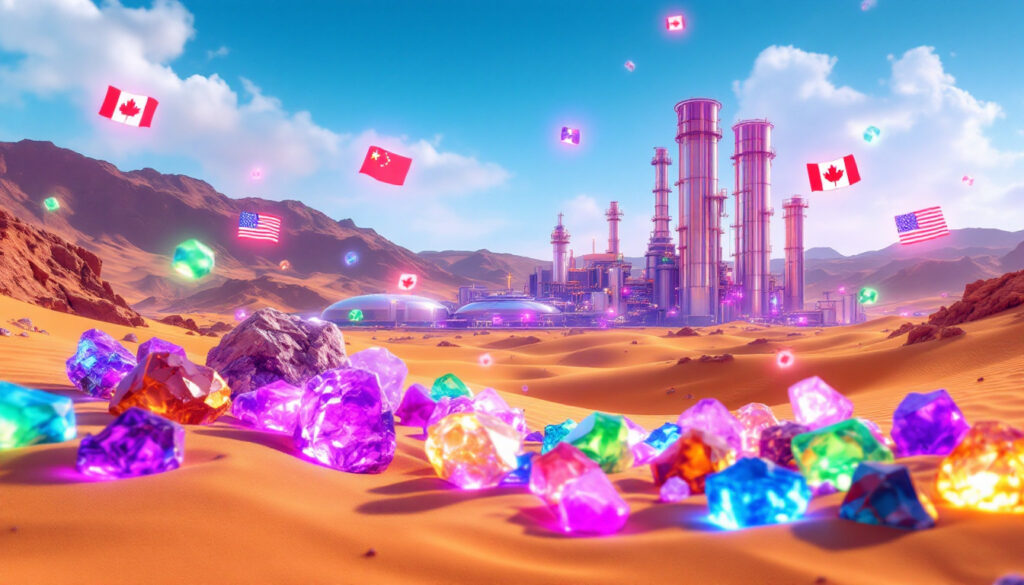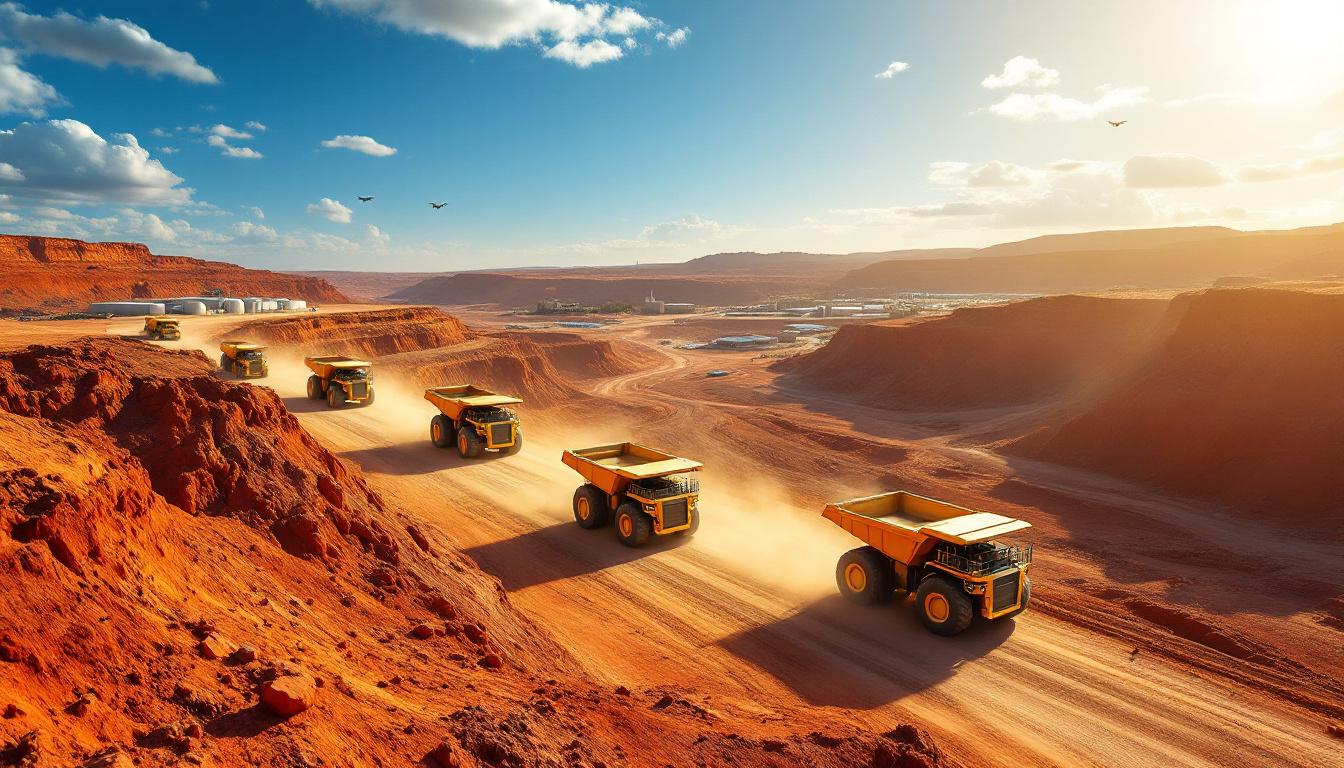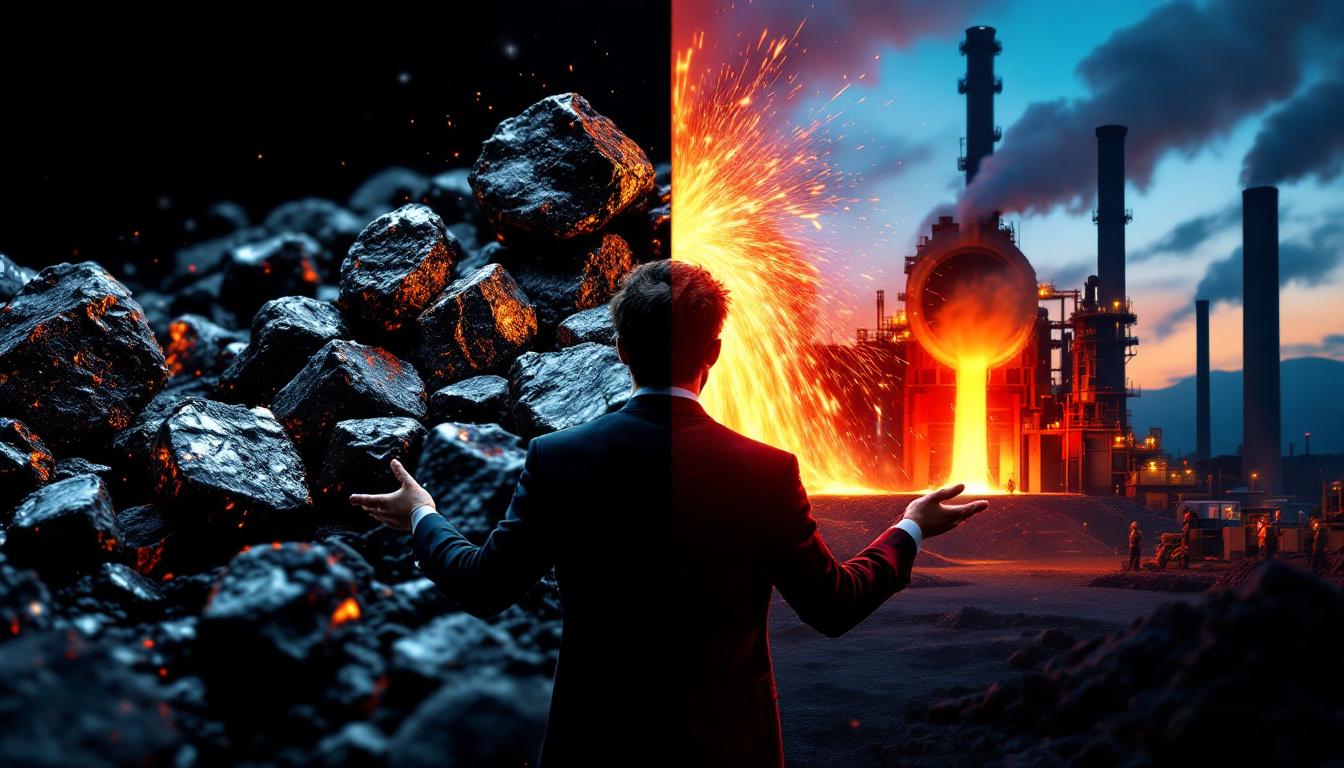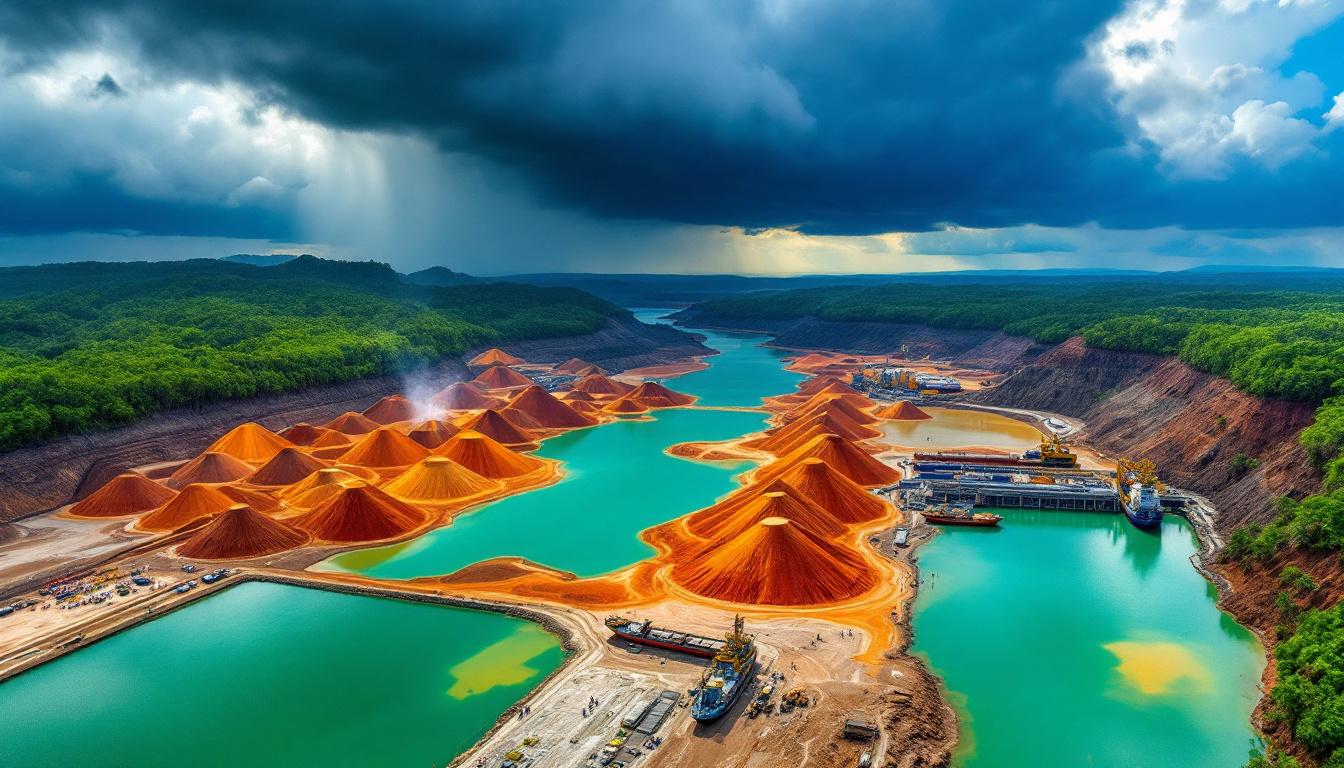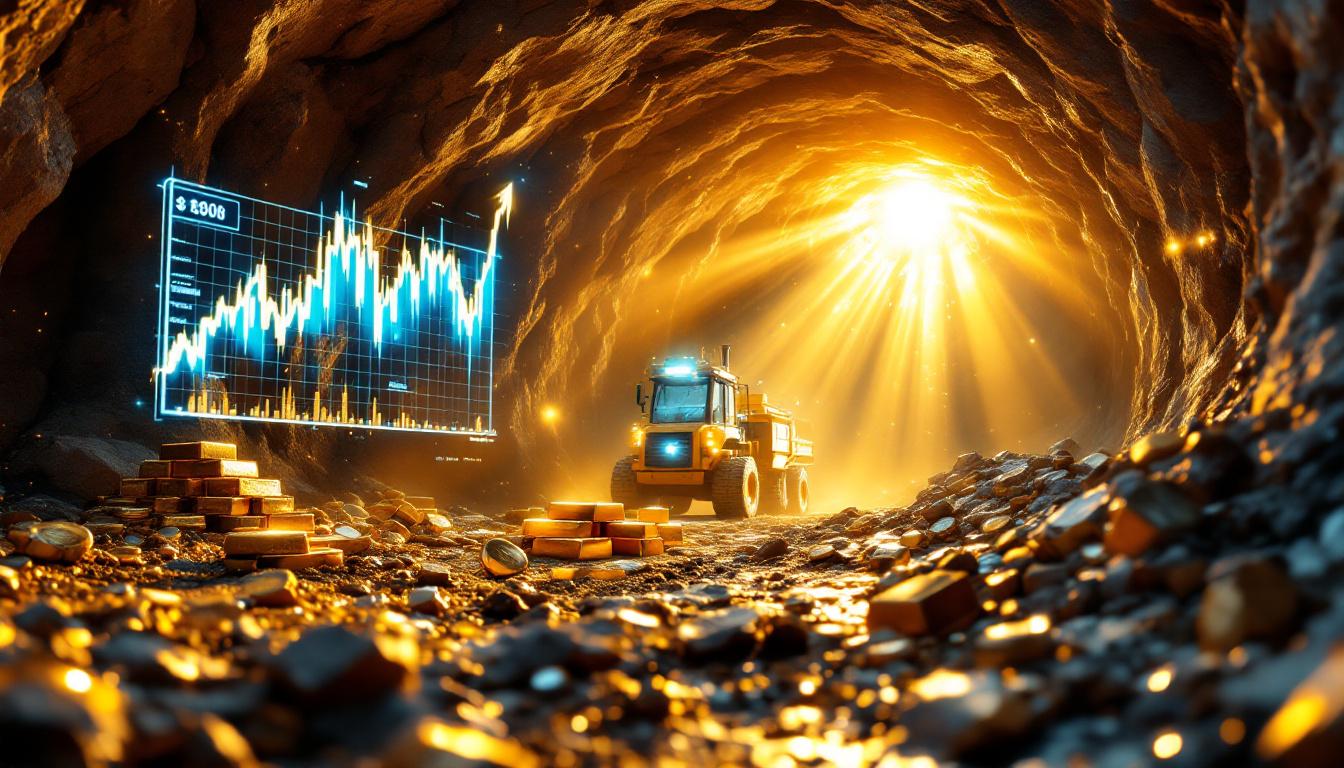Saudi Arabian Mining Company Ma'aden's Rare Earths Partnership: Strategic Expansion into Critical Minerals
Saudi Arabia's state-owned mining giant Ma'aden is embarking on a transformative initiative to establish itself as a global player in the critical minerals sector through strategic partnerships. By evaluating collaborations with MP Materials (U.S.), Shenghe Resources (China), Lynas Rare Earths (Australia), and Neo Performance Materials (Canada), Ma'aden aims to develop a rare earths processing facility and subsequent magnet production plant. This effort aligns with Crown Prince Mohammed Bin Salman's Vision 2030, which seeks to diversify the kingdom's oil-dependent economy by leveraging its $2.5 trillion in mineral reserves. The partnership, slated for finalization by June 2025, underscores Saudi Arabia's ambition to disrupt China's 90% dominance in rare earth refining and secure a role in high-tech supply chains.
What is Ma'aden's Rare Earths Partnership Initiative?
The Strategic Selection Process
Ma'aden is carefully evaluating four global companies with specialized expertise in rare earth elements extraction, processing, and commercialization. These potential partners bring distinct capabilities that could benefit Saudi Arabia's ambitions to establish a complete rare earths value chain. The selection process is rigorous, focusing on technological compatibility, market access, and alignment with Saudi Arabia's sustainability goals.
The shortlisted companies represent a diverse geographical spread, with MP Materials from the United States, Shenghe Resources from China, Lynas Rare Earths from Australia, and Neo Performance Materials from Canada. Each brings unique strengths – MP Materials operates the only active rare earths mining and processing facility in the United States, while Shenghe Resources offers extensive experience in rare earths separation and downstream applications.
Lynas Rare Earths contributes expertise as the largest producer of separated rare earth products outside of China, and Neo Performance Materials specializes in advanced materials manufacturing, including rare earth permanent magnets. This diverse pool of expertise gives Ma'aden access to various technological approaches and market perspectives.
Partnership Objectives and Timeline
The partnership's primary goal is to develop a state-of-the-art rare earths processing facility in Saudi Arabia that can separate mixed rare earth concentrates into individual rare earth oxides. This facility will be designed to meet stringent environmental standards while achieving competitive production costs. Following this, Ma'aden plans to establish a magnet manufacturing plant to capture greater value from the rare earth supply chain.
A key component of the partnership involves conducting comprehensive geological and metallurgical studies to determine the optimal methods for mining and processing Saudi Arabia's indigenous rare earth resources. These studies will assess ore grades, mineralogy, and extraction challenges specific to Saudi deposits. The technical assessment is expected to conclude by December 2025, providing a roadmap for commercial development.
The partnership strategy reflects Ma'aden's long-term vision to not merely extract raw materials but to develop sophisticated downstream capabilities. By controlling multiple stages of the rare earths value chain, Saudi Arabia aims to become less susceptible to market volatility and supply disruptions while capturing greater economic value.
Why is Saudi Arabia Pursuing Rare Earths Development?
Saudi Arabia's Mineral Wealth
Recent geological surveys have dramatically increased Saudi Arabia's estimated mineral wealth, with government officials revising the kingdom's mineral reserves value to an impressive $2.5 trillion (SR9.38 trillion). This significant upward adjustment primarily reflects newly discovered rare earth element deposits throughout the Arabian Shield geological formation, which covers much of western Saudi Arabia.
These deposits contain critical heavy rare earth elements like dysprosium and terbium, which command premium prices in global markets due to their scarcity and essential role in high-performance magnets. Geological data indicates that Saudi Arabia's rare earth deposits feature favorable mineralogy with lower radioactive content compared to some global competitors, potentially offering environmental and processing advantages.
Despite possessing these valuable resources, Saudi Arabia's mining sector remains underdeveloped, contributing less than 3% to GDP. Historical focus on petroleum extraction has left mineral exploration relatively neglected until recent years. The Saudi Geological Survey has accelerated mapping efforts, using advanced airborne geophysical surveys and satellite imaging to identify promising mineral zones across the kingdom's vast territory.
Strategic Economic Diversification
Ma'aden's rare earths initiative represents a cornerstone of Crown Prince Mohammed Bin Salman's Vision 2030 economic transformation plan. This ambitious strategy aims to reduce Saudi Arabia's historical dependence on oil revenues by developing multiple economic sectors, with mining identified as a priority growth area capable of creating high-value jobs and attracting foreign investment.
The rare earths project exemplifies the kingdom's approach to resource development under Vision 2030 – focusing not just on extraction but on developing complete industrial ecosystems. By establishing processing capabilities and eventually magnet manufacturing, Saudi Arabia aims to capture significantly more value than traditional resource exporters.
The kingdom has implemented structural reforms to support mining sector growth, including streamlining licensing procedures, updating the mining investment law, and establishing special economic zones with preferential regulations for mineral processing activities. These initiatives have already attracted over $32 billion in mining investment commitments since 2021, signaling growing international confidence in Saudi Arabia's mining industry predictions.
How Does This Partnership Fit into Global Rare Earths Supply Chains?
China's Market Dominance
China's overwhelming control of approximately 90% of global rare earths refining capacity represents one of the most concentrated industrial monopolies in the modern economy. This dominance extends beyond processing to encompass 85% of magnet manufacturing and significant influence over pricing mechanisms and technical standards in the rare earths market.
China achieved this position through decades of strategic investment, environmental regulatory advantages, and technical innovation in separation processes. The country's rare earth industry benefits from integration across the value chain, from mining operations primarily in Inner Mongolia to advanced manufacturing hubs in coastal provinces.
For countries dependent on rare earth elements, this concentration creates significant supply security concerns, particularly as China has previously demonstrated willingness to use rare earths as leverage in trade disagreements. China's critical mineral export restrictions imposed in 2010-2011 caused price spikes exceeding 750% for some elements, highlighting the vulnerability of global supply chains to disruption.
Saudi Arabia's entry into this market represents a potential diversification of global rare earths supply, potentially reducing geopolitical risks for Western economies and their industrial sectors. The partnership initiative comes at a time when rare earth demand is projected to grow at 8-12% annually through 2030, driven primarily by electric vehicle production and renewable energy deployment.
Technical Challenges and Expertise
Rare earths processing presents formidable technical hurdles that have prevented many countries from developing domestic capabilities despite possessing raw materials. The 17 chemically similar metals require sophisticated separation technologies, including solvent extraction circuits with hundreds of mixer-settler stages, ion exchange processes, and precise pH control systems.
The separation difficulty increases progressively along the lanthanide series, with heavy rare earths like dysprosium and terbium being particularly challenging to isolate with high purity. Commercial viability requires achieving 99.9%+ purity levels while managing complex waste streams that often contain radioactive elements like thorium and uranium.
Ma'aden's potential partners bring essential expertise to overcome these challenges. Shenghe Resources has pioneered continuous extraction techniques that reduce processing time and chemical consumption, while Neo Performance Materials has developed proprietary separation technologies specifically tailored for heavy rare earth elements. This technical knowledge transfer will be crucial for Saudi Arabia to establish competitive operations.
Water management represents a particular challenge for rare earth processing in Saudi Arabia's arid environment. Conventional separation requires 200-400 cubic meters of water per ton of rare earth oxides produced. Partners will need to adapt technologies for water recycling and potentially integrate desalination capabilities to ensure sustainable operations.
What Other Mining Investments is Saudi Arabia Making?
Major Investment Initiatives
Saudi Arabia's mining sector expansion extends well beyond rare earths, with $9.32 billion allocated for major smelting projects through partnerships with India's Vedanta and China's Zijin Mining. These investments will establish large-scale processing facilities for copper, zinc, and other base metals, creating an integrated metals ecosystem in planned industrial cities.
Ma'aden's financial capacity to pursue these ambitious projects was enhanced in February 2025 when the company secured $1.25 billion through its first Islamic bond issuance. This sukuk offering was oversubscribed by international investors, demonstrating confidence in Ma'aden's growth strategy. The funds support the company's $12 billion expansion plan, which includes doubling phosphate fertilizer production capacity by 2030.
The kingdom's mining investment strategy emphasizes value-added processing rather than raw material exports. New facilities incorporate advanced automation systems, renewable energy integration, and circular economy principles to minimize environmental impact while maximizing economic returns. This approach addresses both global sustainability expectations and domestic employment objectives by creating higher-skilled jobs than traditional mining operations.
Strategic Partnerships in Critical Minerals
Beyond rare earths, Saudi Arabia is developing multiple critical mineral supply chains through strategic lithium investments. Memorandums of understanding with Australia's Hastings Technology Metals and Critical Metals focus on developing lithium resources essential for battery production, supporting the kingdom's ambitions in electric mobility.
These critical minerals initiatives complement Saudi Arabia's sovereign wealth fund's substantial investment in Lucid Motors, which opened an electric vehicle manufacturing facility in Saudi Arabia in 2023. This vertical integration strategy aims to control key components of the EV supply chain, from mineral extraction through component manufacturing to vehicle assembly.
The kingdom has also initiated collaborations with the United States Geological Survey and comparable European institutions to accelerate geological mapping and resource characterization. These partnerships bring advanced exploration technologies to Saudi Arabia, including hyperspectral imaging and artificial intelligence-enhanced geological modeling that can identify previously unrecognized mineral deposits.
What Makes Rare Earth Elements Strategically Important?
Applications and Industrial Significance
Rare earth elements serve as irreplaceable components in numerous high-technology products and systems essential to modern economies. Neodymium and praseodymium form the basis for NdFeB permanent magnets, which offer unmatched magnetic strength-to-weight ratios crucial for miniaturizing electronics and maximizing efficiency in motors and generators.
In renewable energy applications, each megawatt of wind turbine capacity requires approximately 200 kilograms of rare earth magnets. Electric vehicle traction motors typically contain 1-2 kilograms of rare earth elements, with high-performance models using significantly more. Defense systems, from radar arrays to guidance systems, similarly depend on rare earth components for optimal performance.
Beyond magnets, rare earths serve critical functions in catalysts, phosphors for energy-efficient lighting, polishing compounds for electronic components, and specialized glass formulations. Lanthanum is essential for oil refining catalysts, while europium and terbium enable the color reproduction in high-definition displays. These diverse applications make rare earths foundational to both established and emerging industries.
The unique electronic properties of rare earth elements result from their unusual electron configuration, with electrons in the 4f orbital shell. This configuration cannot be replicated with other elements, meaning that despite intensive research into alternatives, many rare earth applications have no viable substitutes at comparable performance levels.
Supply Chain Security Concerns
Global concerns about rare earth supply chain vulnerabilities have intensified as industries increasingly depend on these materials for technological advancement and decarbonization efforts. The concentrated nature of supply, with China dominating processing capacity, creates asymmetric risks for nations pursuing energy transition and technological sovereignty.
Countries have responded with various policy initiatives to secure supplies, including the U.S. Critical Minerals Strategy, the European Raw Materials Act, and Japan's strategic stockpiling program. These efforts have had limited success in establishing alternative supply chains due to the technical complexity of rare earth processing and China's entrenched cost advantages.
Saudi Arabia's entry into this market could significantly impact global supply dynamics by introducing a major new player with substantial financial resources and strategic motivation. The kingdom's political relationships with both Western nations and China position it as a potential bridge supplier, able to serve diverse markets while balancing geopolitical considerations.
For rare earth dependent industries, the diversification of supply sources reduces vulnerability to disruption and potentially stabilizes pricing. Historical volatility in rare earth markets has discouraged some manufacturers from incorporating these materials despite their technical advantages. More predictable supply and pricing environments could accelerate technology adoption in sectors like renewable energy and electric transportation.
Recent global initiatives have focused on addressing critical mineral shortages that threaten clean energy transitions, with Saudi Arabia positioning itself as a potential solution provider in this space. Additionally, the kingdom's efforts align with broader Middle East mining trends showing increased investment in critical minerals processing.
FAQ: Saudi Arabia's Rare Earths Development
What are rare earth elements?
Rare earth elements comprise a group of 17 chemically similar metals that, despite their name, are relatively abundant in the Earth's crust but rarely found in concentrated, economically viable deposits. They possess unique magnetic, luminescent, and electrochemical properties that make them essential for many high-tech applications.
Why is processing rare earths challenging?
The refinement of rare earths is technically complex because these elements have similar chemical properties, making separation difficult. The process typically involves multiple stages of chemical treatment, which can be environmentally challenging if not properly managed.
How will this partnership impact global rare earths markets?
Saudi Arabia's entry into rare earths processing could help diversify global supply chains currently dominated by China. This diversification may improve supply security for industries dependent on these critical minerals and potentially affect pricing dynamics in the longer term.
What economic benefits could this bring to Saudi Arabia?
Beyond direct revenue from mining and processing operations, developing a rare earths industry could create high-skilled jobs, stimulate technological innovation, and attract further investment in downstream industries like magnet manufacturing and advanced electronics production.
Key Statistics and Data Points
| Statistic | Value |
|---|---|
| Saudi Arabia's estimated mineral reserves value | $2.5 trillion (SR9.38 trillion) |
| Ma'aden's expansion plan through 2030 | $12 billion |
| Ma'aden's Islamic bond issuance (February 2025) | $1.25 billion |
| Planned investment in smelting projects | $9.32 billion |
| China's control of global rare earths refining | Approximately 90% |
| Partnership decision timeline | End of June 2025 |
| Study completion timeline | December 2025 |
"Saudi Arabia's focus on mining aligns with Crown Prince Mohammed Bin Salman's Vision 2030, which aims to diversify the economy beyond its traditional reliance on oil."
Ready to Gain an Edge in Critical Minerals Investing?
Discover significant mineral finds before the market with Discovery Alert's proprietary Discovery IQ model, providing instant notifications when ASX-listed companies announce potentially game-changing discoveries. Explore historic returns from major mineral discoveries at Discovery Alert's discoveries page and position yourself ahead of the investment curve.
